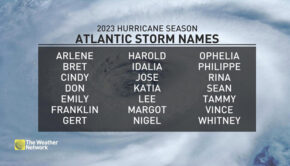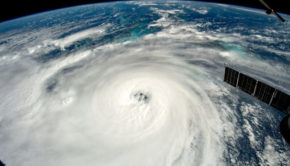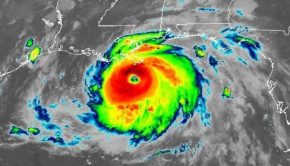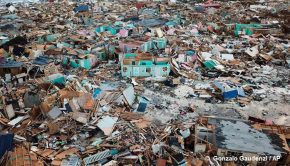2005 Hurricane season – Remembering the Catastrophe
Published on August 25th, 2015
The 28 named tropical storms and hurricanes that formed a decade ago shattered the previous record of 21 named storms in the Atlantic, set in 1933. A tropical storm has winds of 39-73 mph; a hurricane has winds of 74 mph and higher.
The 2005 hurricane season is most remembered for Hurricane Katrina, which slammed into the Gulf Coast 10 years ago this week, killing 1,500 people and forever changing the city of New Orleans. But Katrina was only one of the record-breaking 28 named storms that disastrous year. In all, those storms caused 4,000 deaths and almost $160 billion in damage in the USA, Mexico, Central America and the Caribbean. Nothing like that season has occurred since.
Other weather records were set that year: most hurricanes, 15; and a record six of them hit the USA. Four of those that hit the USA were “major” hurricanes, meaning a Category 3 or stronger with winds of at least 111 mph.
There were so many storms that the National Hurricane Center ran out of names. The Climate Prediction center turned to a backup list of names using the Greek alphabet, such as Alpha, Beta, Gamma and Delta.
The final storm of the season, Tropical Storm Zeta, from late December into early January 2006, formed a full month after the official end of hurricane season (November 30).
In addition to Katrina, the other major hurricanes that hit the USA in 2005 were Emily, Rita and Wilma. The threat of Hurricane Rita, a few weeks after Katrina, created a calamitous evacuation of the Houston area and contributed to dozens of deaths. Wilma, which hit southwestern Florida on Oct. 24, 2005, was the last major hurricane to hit the USA. It was also the last hurricane of any strength to hit Florida.
Three main weather factors came together that year to fuel the series of storms, Klotzbach said. He pointed to the unusually warm sea water (which helps strengthen hurricanes), a lack of strong winds high in the atmosphere (which can tear apart developing storms) and very high humidity over the Atlantic (which also can fuel hurricanes).
In addition, wind patterns over North America caused many storms to form very close to the USA and head directly for the coasts, instead of curving out to sea, as many storms have done since then, said meteorologist Gerry Bell of the National Oceanic and Atmospheric Administration.
A record 11 storms formed that year in the Gulf of Mexico, he said. “Everything that would favor hurricane development came together” that year, Bell said. Since then, strong steering currents in the atmosphere along the East Coast from 2006-2014 tended to push storms away from the U.S. coast, Klotzbach said.
Although Hurricane Ike hit Texas in 2008 and Hurricane Sandy struck New Jersey in 2012, both causing significant damage, neither was rated a Category 3 or higher at landfall.
This year, four named storms have formed in the Atlantic. Only one, Danny, reached hurricane status. Even though a few more storms are potentially brewing in the Atlantic, this year’s hurricane season is likely to remain on the quiet side, mainly because of El Niño, which tends to decrease Atlantic hurricane activity.









 We’ll keep your information safe.
We’ll keep your information safe.